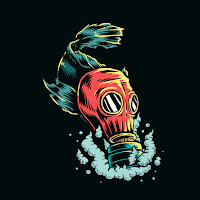THE DIFFERENCE OF RASTER AND VECTOR IMAGE
THE DIFFERENCE OF RASTER AND VECTOR IMAGE
VECTOR
Vector images which are made of thin lines and curves known as paths, are rooted in mathematical theory. Vector graphics must be created in computer software that is designed to create this intricate wireframe-type image and each line includes defined node positions, node locations, line lengths and curves. Any of the lines and curves in the image can be assigned a color value. Because of this defined, formulaic approach to drawing, each image can be sized and scaled repeatedly and limitlessly without losing resolution or beginning to look cloudy or pixelated.
RASTER
Raster images are often called bitmap images because they are made of millions of tiny squares, called pixels. You can identify a raster or bitmap image by looking at it very closely. If you zoom in enough, you will be able to see the square outlines of each pixel (especially around edges where there are dramatic color contrasts).
Raster graphics typically have larger file sizes than their vector counterparts. Higher DPI (dots per inch) and PPI (pixels per inch) settings also contribute to larger files because software must keep track of and be able to render each pixel. File size can become a concern if storage or server space is limited or if files have to be transmitted electronically.
VECTOR VS RASTER
The main difference between vector and raster graphics is that raster graphics are composed of pixels, while vector graphics are composed of paths. A raster graphic, such as a gif or jpeg, is an array of pixels of various colors, which together form an image.
The main difference between vector and raster graphics is that raster graphics are composed of pixels, while vector graphics are composed of paths. A raster graphic, such as a gif or jpeg, is an array of pixels of various colors, which together form an image.










Comments
Post a Comment